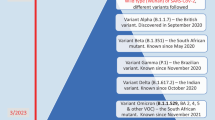Abstract
Human immunodeficiency virus (HIV) disease is recognized as an important cause of dilated cardiomyopathy. Myocarditis and myocardial infection with HIV-1 are the best-studied causes of cardiomyopathy in HIV disease. HIV-1 virions appear to infect myocardial cells in a patchy distribution with no direct association between the presence of the virus and myocyte dysfunction. Myocardial dendritic cells seem to play a significant pathogenetic role by activating multifunctional cytokines (i. e., tumor necrosis factor-α) and the inducible form of nitric oxide synthase that contribute to progressive and late myocardial tissue damage. Coinfection with other viruses (usually, coxsackievirus B3 and cytomegalovirus) may also play an important etiopathogenetic role.
The introduction of highly active antiretroviral therapy (HAART) has significantly reduced the incidence of myocarditis in HIV-infected patients living in developed countries. By contrast, in developing countries, where the availability of HAART is scanty and greater is the pathogenetic role of nutritional factors, the incidence of HIV-associated myocarditis and cardiomyopathy is increasing with a high mortality rate for congestive heart failure.
A clinical diagnosis of myocarditis or congestive heart failure may be difficult in an HIV-infected patient due to masking of symptoms by concomitant bronchopulmonary disease and/or wasting syndromes, especially in a more advanced stage of HIV disease. Immunomodulatory therapy (intravenous immunoglobulins) may be helpful in adults and children with HIV-associated myocarditis and declining left ventricular function. Data on the role of HAART in the treatment of HIVassociated myocarditis and cardiomyopathy are lacking.
Zusammenfassung
Die Infektion mit dem humanen Immundefizienzvirus (HIV) ist als eine relevante Ursache für die Ausbildung einer dilatativen Kardiomyopathie erkannt worden. Die Myokarditis sowie die myokardiale Infektion mit HIV-1 sind die bisher am besten untersuchten Ursachen für die Ausbildung einer Kardiomyopathie bei HIV-positiven Personen. HIV-1-Virionen verursachen eine verstreute Infektion myokardialer Zellen ohne direkte Beziehung zwischen der Präsenz des Virus und der Funktion des Myozyten. Hierbei scheinen dendritische Zellen im Myokard eine signifikante pathogenetische Rolle zu spielen. Dies geschieht mittels Aktivierung multifunktionaler Zytokine wie z. B. Tumor-Nekrose-Faktor-α und der induzierbaren Form der Nitroxid- Synthetase (iNOS), die zur myokardialen Gewebsschädigung beitragen. Koinfektionen mit anderen Viren, wie häufig Coxsackie-Virus B3 und Zytomegalievirus, können ebenfalls eine bedeutende ätiopathologische Rolle spielen.
Mit Einführung neuer antiretroviraler Therapiekonzepte (HAART) hat sich die Inzidenz von Myokarditiden in den Industrienationen deutlich reduziert. Im Gegensatz dazu steigt die Inzidenz HIV-assoziierter Myokarditiden und Kardiomyopathien in Entwicklungsländern, wo der Zugang zu effektiver Medikation begrenzt ist und der Ernährungssituation eine höhere pathogenetische Rolle zukommt.
Die klinische Diagnose der Myokarditis oder Herzinsuffizienz ist bei HIV-positiven Personen, insbesondere im fortgeschrittenen Stadium der Erkrankung, nicht zuletzt aufgrund gleichzeitiger Symptome bronchopulmonaler Erkrankungen und/oder eines Wasting-Syndroms erschwert. Eine immunmodulatorische Therapie, wie sie durch die intravenöse Gabe von Immunglobulinen erreicht wird, kann bei Erwachsenen und Kindern mit HIV-assoziierter Myokarditis und reduzierter Pumpfunktion einen positiven Effekt aufweisen. Erkenntnisse über die Rolle der antiretroviralen Therapie in der Behandlung der HIV-assoziierten Myokarditis und Kardiomyopathie fehlen bisher.
Similar content being viewed by others
Author information
Authors and Affiliations
Corresponding author
Rights and permissions
About this article
Cite this article
Barbaro, G. HIV-Associated Cardiomyopathy. Herz 30, 486–492 (2005). https://doi.org/10.1007/s00059-005-2728-z
Issue Date:
DOI: https://doi.org/10.1007/s00059-005-2728-z
Key Words:
- Human immunodeficiency virus
- Acquired immunodeficiency syndrome
- Cardiomyopathy
- Myocarditis
- Cytokines Tumor necrosis factor-α




